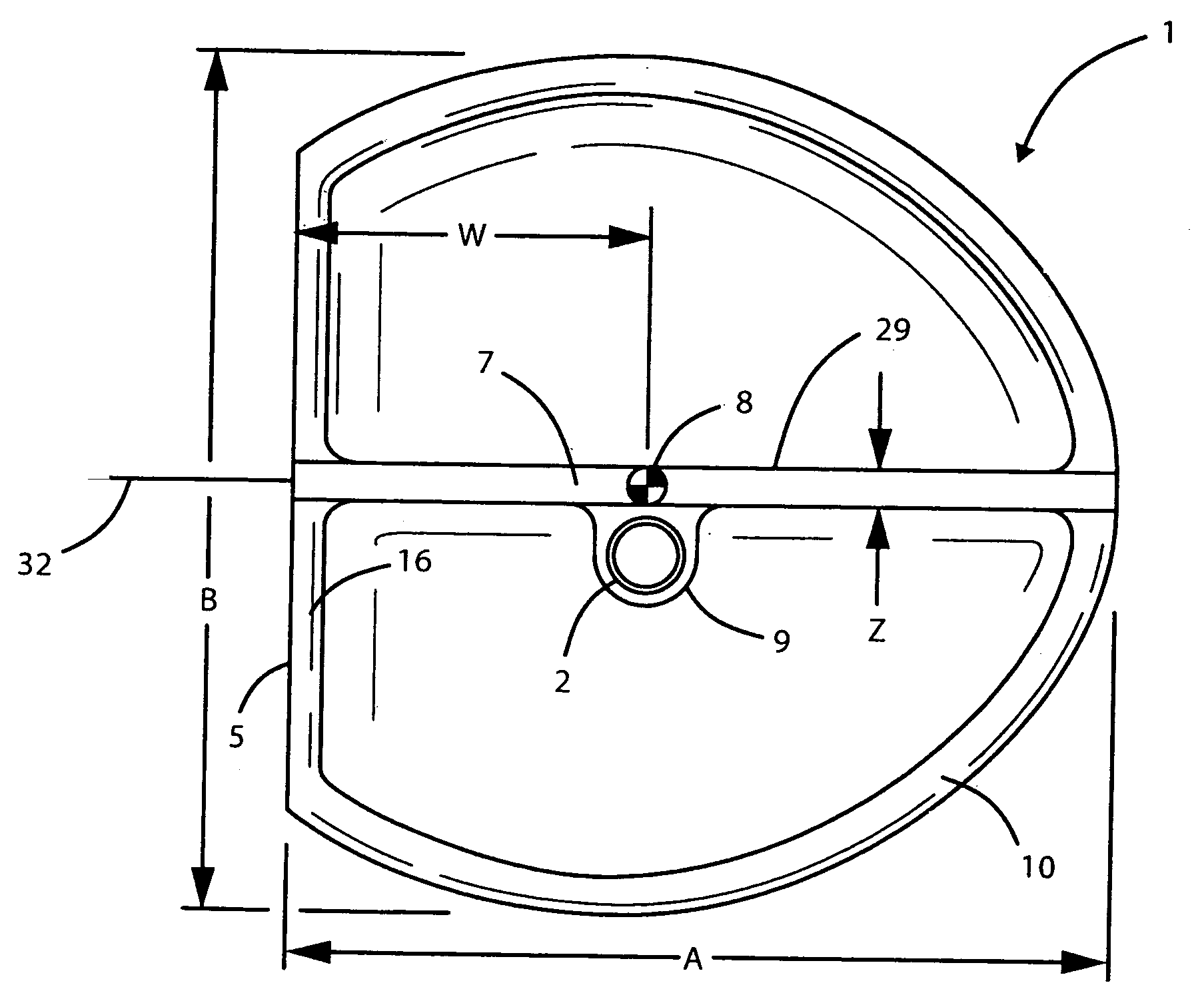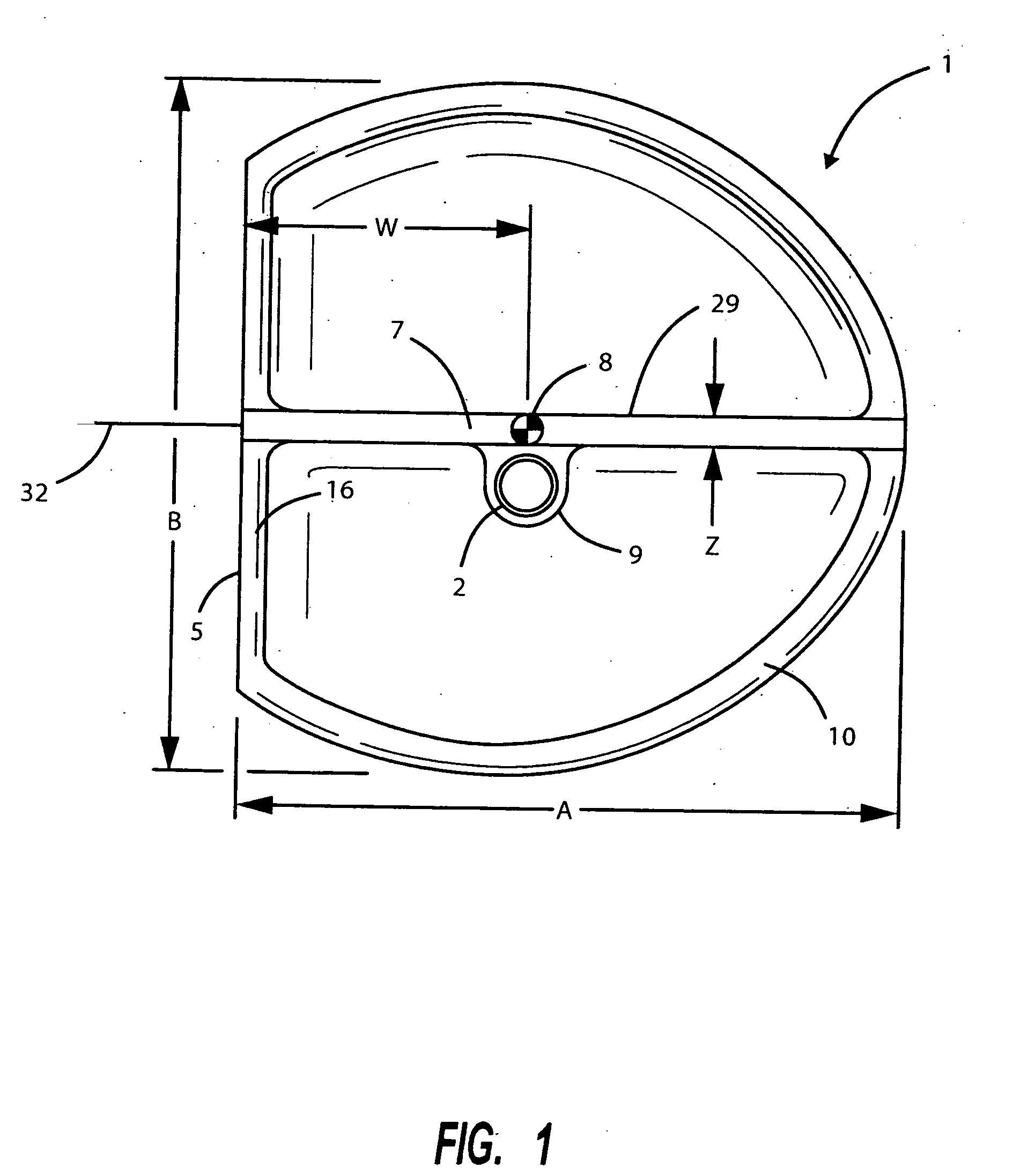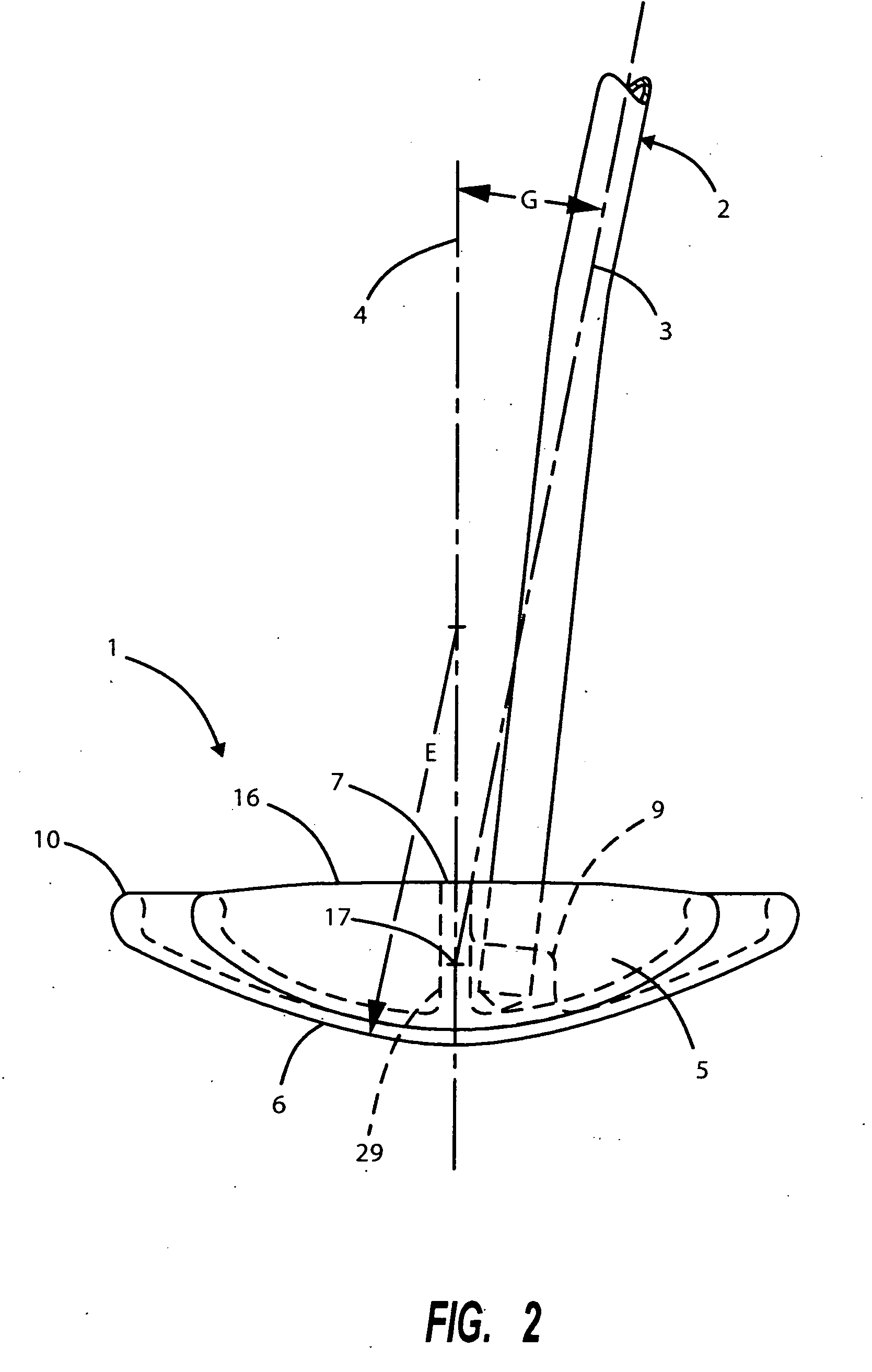Method for selecting a golf putter
a golf putter and golf technology, applied in golf clubs, golf accessories, racket sports, etc., can solve the problems of increasing the tension in the player's hands and arms, increasing increasing the difficulty of aiming the putt, so as to reduce the negative effect of the ball direction, optimize the radius, and reduce the effect of negative effects
- Summary
- Abstract
- Description
- Claims
- Application Information
AI Technical Summary
Benefits of technology
Problems solved by technology
Method used
Image
Examples
Embodiment Construction
A Player's Stance and Aim.
[0029] When putting a golf ball, a proper stance is necessary preparation for striking the ball. It is generally agreed by experts that the eyes of the player should be vertically over the aimline in order to provide the most accurate vision of it, and that alignment of the player's feet with the aimline is necessary for consistent stroking of the putter. Many experts counsel minimum muscle use during stroking of a putter in order to minimize errors. For many players, having the eyes over the aimline and using minimum muscles leads to an upright stance with the arms hanging loosely and the legs and back muscles supporting minimum overhung weight. Further, it is easier to align two objects, such as the ball and the aimline, from a single direction rather than to look backward and forward. Aligning the ball and the aimline from one direction leads to a stance that places the player's eyes behind the ball. Consistent orientation of the putter in the player's h...
PUM
 Login to View More
Login to View More Abstract
Description
Claims
Application Information
 Login to View More
Login to View More - R&D
- Intellectual Property
- Life Sciences
- Materials
- Tech Scout
- Unparalleled Data Quality
- Higher Quality Content
- 60% Fewer Hallucinations
Browse by: Latest US Patents, China's latest patents, Technical Efficacy Thesaurus, Application Domain, Technology Topic, Popular Technical Reports.
© 2025 PatSnap. All rights reserved.Legal|Privacy policy|Modern Slavery Act Transparency Statement|Sitemap|About US| Contact US: help@patsnap.com



